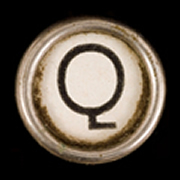I have always wanted to go to the Adelaide Test. A good mate from university used to make an annual pilgrimage with the boys from the Panton Hill Cricket Club. He would rave about long hot days spent drinking in the sun on the ground’s famous hill.
One of the few upsides of my recent move to Adelaide is that I have found myself living not far from the ground. Now that I only have to survive a short walk through the well-tended rose gardens and reversing Mercedes of North Adelaide’s leafy back streets I have no excuses.
There is no doubt that the Adelaide Oval is a good spot for cricket. The ground is the jewel in the Festival state’s crown. Nestled on the banks of the Torrens, just a long throw from the CBD, it cuts a pretty picture.
Adelaide occupies a prominent position in the Australian cricket landscape. The oval has played host to matches since the 1870s and has seen some of the most dramatic moments in Australian cricket. It was here, during the third Test of the 1932–33 Ashes series, that outrage over England’s use of the Bodyline strategy finally boiled over. The tactic created so much anger amongst the Australian public that Mike Brearley has speculated that the then English captain Jardine may have “won the Ashes, but nearly lost an Empire.” The game attracted 174,452 spectators, a record at the time.
Up until recently, the ground held around 34,000 spectators but with the current construction works, capacity must be around half that. It’s a shame I won’t get to see the ground in all of its splendor but the scene is still set for a cracking week of cricket.
Having rarely bowled a ball in anger I am nothing more than an armchair cricket punter. The extent of my cricketing knowledge is limited to listening to Kerry O’Keeffe, playing beach cricket and reading Confessions of a Thirteenth Man. Still, recent history has shown that the Adelaide Oval Curator, Damian Hough, tends to produce a bit of road. That, coupled with the batting performances of both sides in the first Test, means that there is a fair chance of a batting exhibition. It should give me plenty of time to brush up on my cricket parlance.
If nothing else, the cricket coming to town has meant that The Advertiser has dramatically reduced the space it can dedicate to its Kurt Tippett vilification campaign and for that I am glad. The weeklong battle of bat and ball is going to be great.





